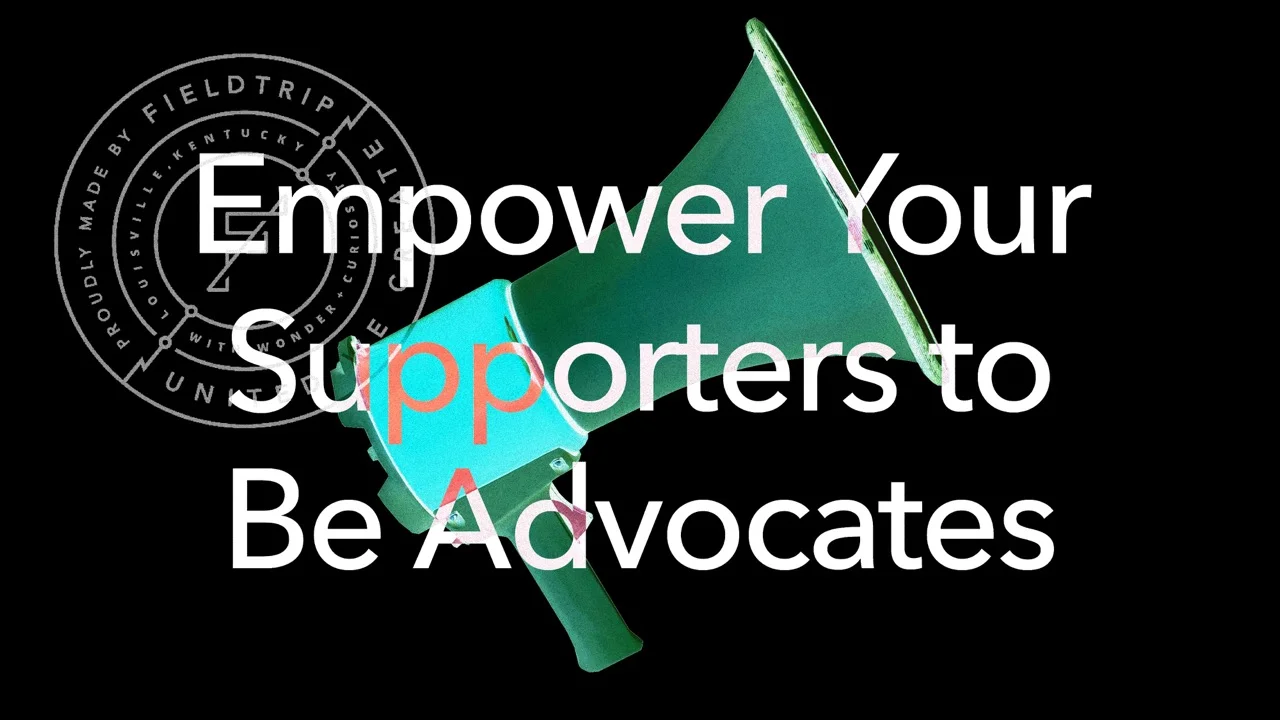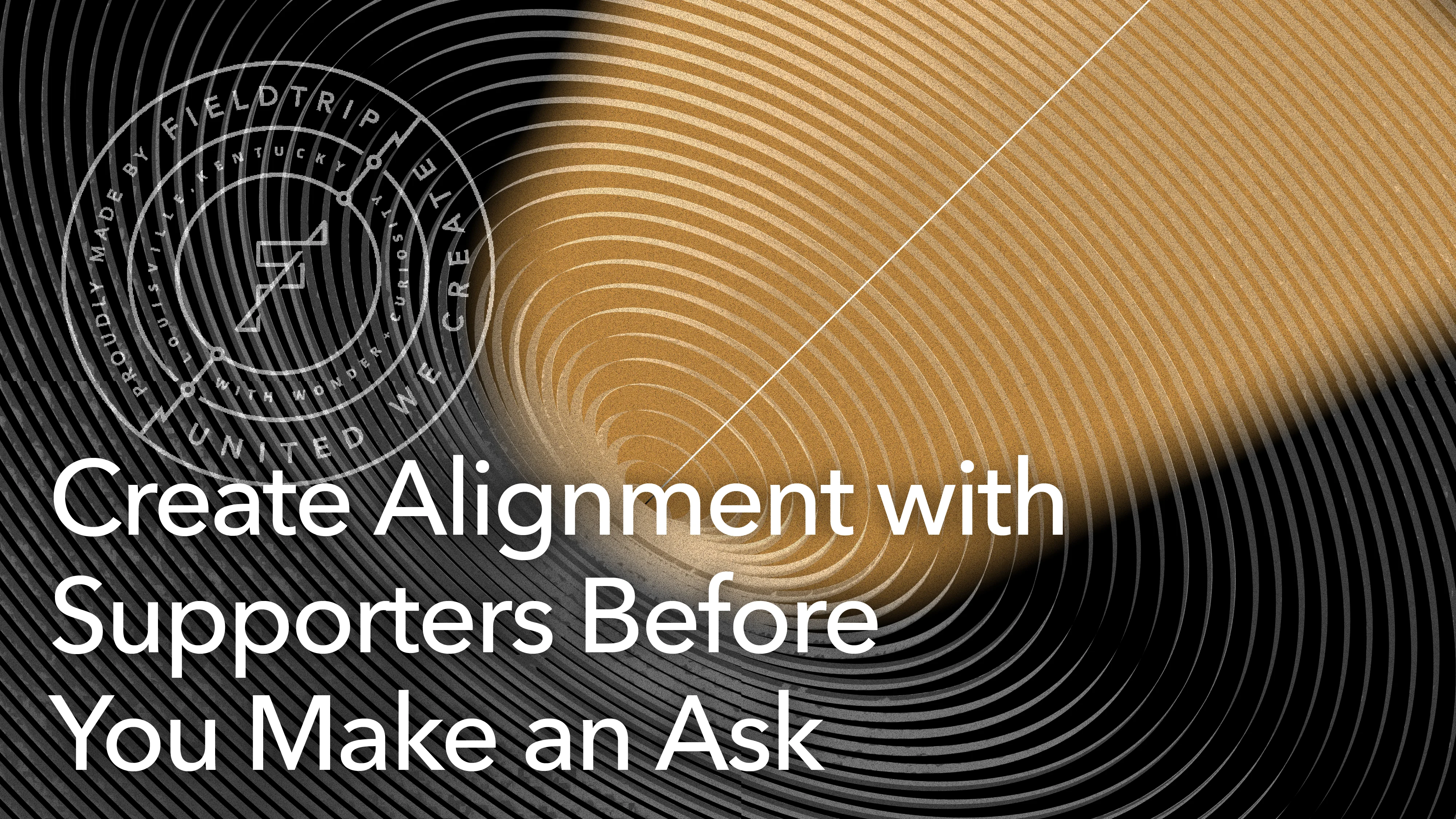Hello, and welcome to Mission Multiplier. I’m Jane Pfeiffer, founder and president of Fieldtrip. At Fieldtrip we work with nonprofit and purpose-driven organizations to help them reduce their largest expense the cost of lost opportunities. Because they aren’t known, they aren’t understood and they aren’t supported. Today we are focusing on one of the biggest non-profit myths. I’m sure you’ve studied this, or at least thought it, that if only you could talk to everyone and make them understand what you do, then surely they would help or support the mission. Well, nonprofit leaders often double down on this belief, thinking that, yes, explaining and telling is the way to get people to care, to understand and ultimately take an action in support of the mission. But it’s not true for a number of reasons. First is that this statement ignores the work that has to happen before someone outside the organization can understand. They have to first be aware of who you are and be aware of the issue, whether that’s a social need or entertainment or something else that your sector and your mission serve. It just really assumes that as soon as people understand, it equates an action. And the second reason that this doesn’t happen is that it’s based on just that assumption that understanding isn’t the same as caring and isn’t the same as confidence in your organization to provide the solution. For example, I can understand your process in how to make a meatloaf, but I will never, ever care, crave, make or order meatloaf. There is no question, but you can explain it all you want and my sentiment will not change.
This doesn’t mean that if someone doesn’t care about your organization or the work that you do, that they’re a cold hearted jerk. Their passions, though, might be not in your organization that addresses hunger in your community. It might be in saving bird habitats or addressing affordable housing. Or truly, they just may not be interested. And we can’t afford to make those types of assumptions when the time, energy and money that it takes to create communications is so limited. Build it and they will come really only works in the movies. And that’s about the only place.
What is valuable about this statement is that maybe it forces us to think and use our brain power to focus on the layers of the conversations that we need to have, whether that be one on one, one to a few, one to many or one to the general public. Think about it this way. If you were speaking to a highly interested individual who has somehow supported your organization before and you have them in a one on one situation, what would that conversation be? How would you use it to advance the relationship? Now, let’s say that the conversation is with a few people who are very passionate about the sector. Again, we will use hunger, very passionate about preventing and solving hunger. But they may not have invested time in your organization, so even that conversation would differ from those that have a general awareness of social issues and how being fed and having good nutrition is really important to solving some of the other issues that that fall around it. And even more, what would the conversation would be if you had a magic megaphone that could literally connect with everyone in your community and explain what you do? So there’s four layers of that conversation and the content, the style, and the method of delivery should be different with each and every one of them. To make it even more complex, those conversations will change based on the audience. Is it a group of donors or potential donors? Is it a past beneficiary or a group of potential clients and beneficiaries? So it’s not just one message spread out through four different paths, but complicated and made more complex by the different conversations and content that need to be had with each of your audiences.
Let’s see if we can clear up some of this confusion and make it a little more straightforward. You will recall, if you’ve been watching Mission Multipliers, what the Triple A Assessment Tool is and how we use that, and you can always click on click on the download below to see it. It shows that there are four layers of an audience’s relationship with us, and that is true no matter what the audience is at the beginning, the public. It starts with awareness. They have to know your name and have an idea of what you do. In alignment, they know your name, know what you do, and the issue is important to them. You’re not the only option, but you’re a quality option. And then three (I added a another A today, just for this conversation) is where there is an action. You could think of it as a transaction. Whether that somebody reaches out to you for help, somebody makes a gift, somebody volunteers for the first time where they at least give you a chance or make a choice to invest in you. Whether that’s for themselves or on behalf of your mission. And then finally, the fourth layer is advocacy. This is where the relationship shifts because your mission and your organization has become part of their identity. They can no longer separate the two, and they become your advocate, your ambassador, and your cheerleader.
Using this lens, we can apply this to the different types of conversations we need to have, how they should be delivered and what that content should be like. For example, the basic messaging layer is your mission. It’s the essence of what you do in its simplest form. It’s an emotional little tidbit that is provoking curiosity. So the mission is at the center of all of our communications and messaging. Now, let’s take that out to one to a one. This is where we’re having conversation missions to either create advocates or to re-engage people that have invested in us to become an advocate. Next, if we continue to blow this out, is one to a few. This is where we’re asking them to take action. This could be having a conversation to a professional organization that’s dedicated to corporate financial leaders. You might be talking about social capital, the economic impact of having a social mission and doing work for good. But that conversation will differ dramatically from where you’re trying to align people. So here you might be speaking at a conference to people that are gathered around the table to talk about the issues and challenges that face solving and preventing hunger in your community. And finally, public is where awareness lives. It’s a general audience and people may or may not be aware of you. And what does that conversation need to be and how does it need to be delivered? Let’s take it back to that luncheon for financial leaders. That’s one to a few very tight interests around a specific topic. That conversation and discussion would be dramatically different than if you’re speaking at a Christian church from the pulpit after services. Yes, people have a similar and shared interest, but that conversation and content has to be dramatically different. Now, this is difficult and it’s hard to do, especially with the limited resources and time that you can spend in thinking about strategic communication. You have to remember that thinking through this will create efficiencies down the road. If you could create this kind of matrix for each of these layers of the relationship for donors, another one for employees and other one for beneficiaries, it’s doing the heavy lift to make future conversations much easier and far more effective. Thanks for watching today and to get more Mission Multiplier videos, just visit wearefieldtrip.com/nonprofits.



